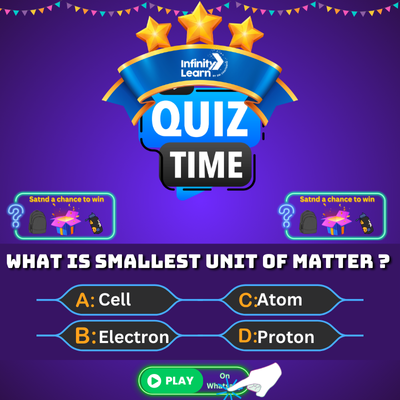Table of Contents
Khan Abdul Ghaffar Khan – Early Life and Background
Khan Abdul Ghaffar Khan, also known as Bacha Khan or the Frontier Gandhi, was born on February 6, 1890, in Utmanzai, a small village in present-day Pakistan. He was a prominent freedom fighter and a close ally of Mahatma Gandhi, known for his non-violent opposition to British rule in India.
Khan Abdul Ghaffar Khan Education
Khan Abdul Ghaffar Khan’s education played a crucial role in shaping his outlook and commitment to social reform. He initially attended the Edwardes Mission High School in Peshawar, where he was exposed to modern education. However, his formal education was cut short due to the colonial government’s restrictions and his early involvement in activism.
Also Check: List of Biographies
Abdul Ghaffar Khan- History and Activism
Abdul Ghaffar Khan’s history is marked by his unwavering dedication to the cause of Indian independence and social justice. He founded the Khudai Khidmatgar (Servants of God) movement, which promoted non-violence and social reform among the Pashtun people. His efforts earned him the title “Frontier Gandhi,” reflecting his adherence to Gandhian principles.
Khan Abdul Ghaffar Khan in Hindi
खान अब्दुल गफ्फार खान, जिन्हें ‘बाचा खान’ और ‘सीमांत गांधी’ के नाम से भी जाना जाता है, का जन्म 6 फरवरी 1890 को पेशावर के निकट उतमनजई गाँव में हुआ था। वह एक प्रमुख स्वतंत्रता संग्राम सेनानी और महात्मा गांधी के करीबी सहयोगी थे। उन्होंने अपने जीवन का अधिकांश समय अंग्रेजी हुकूमत के खिलाफ लड़ाई में और समाज सुधार में बिताया।
खान अब्दुल गफ्फार खान ने अपनी प्रारंभिक शिक्षा पेशावर के एडवर्ड मिशन हाई स्कूल से प्राप्त की। हालांकि, शिक्षा को लेकर उनके मार्ग में कई बाधाएं आईं, लेकिन उन्होंने आधुनिक शिक्षा और समाज सुधार की दिशा में अपना कार्य जारी रखा।
खान अब्दुल गफ्फार खान ने 1929 में खुदाई खिदमतगार (ईश्वर के सेवक) नामक आंदोलन की स्थापना की, जो अहिंसा और समाज सुधार पर आधारित था। इस आंदोलन ने पश्तून लोगों में शिक्षा, सामाजिक जागरूकता और स्वतंत्रता की भावना को बढ़ावा दिया। उनके नेतृत्व में, खिदमतगार आंदोलन ने भारतीय स्वतंत्रता संग्राम में महत्वपूर्ण भूमिका निभाई।
आजादी के बाद भी, खान अब्दुल गफ्फार खान ने शांति और एकता के लिए काम करना जारी रखा। उन्होंने विभाजन का विरोध किया और हिंदू-मुस्लिम एकता को बढ़ावा देने के लिए अपने प्रयास जारी रखे। उनके प्रयासों को वैश्विक स्तर पर सराहा गया और उन्हें कई पुरस्कारों से सम्मानित किया गया।
खान अब्दुल गफ्फार खान का निधन 20 जनवरी 1988 को पेशावर में हुआ। उनकी मृत्यु के बाद भी, उनकी अहिंसा और समाज सुधार की विरासत जीवित है। उनकी शिक्षाएँ और कार्य आज भी समाज सुधारकों और शांति के समर्थकों के लिए प्रेरणा का स्रोत हैं।

Khan Abdul Ghaffar Khan – Later Years and Contributions
In his later years, Khan Abdul Ghaffar Khan continued to advocate for peace and unity, even after the partition of India. He opposed the division of India and worked tirelessly to promote harmony between Hindus and Muslims. His efforts were recognized globally, and he received several accolades for his contributions to peace.
Khan Abdul Ghaffar Khan Death
Khan Abdul Ghaffar Khan passed away on January 20, 1988, in Peshawar, Pakistan. His death marked the end of an era, but his legacy of non-violence and social reform continues to inspire generations. He was buried in Jalalabad, Afghanistan, according to his wishes.
Also Read: Vinayak Damodar Savarkar Biography
Khan Abdul Ghaffar Khan- Legacy and Influence
Khan Abdul Ghaffar Khan’s legacy lives on through the numerous educational institutions, social organizations, and peace movements inspired by his work. His commitment to non-violence and social justice remains a guiding light for activists worldwide.
Why Abdul Ghaffar Khan Is Called Frontier Gandhi
Khan Abdul Ghaffar Khan, known as the “Frontier Gandhi,” earned this title due to his unwavering commitment to non-violence and his close association with Mahatma Gandhi. Born in 1890 in the North-West Frontier Province (now Khyber Pakhtunkhwa, Pakistan), Ghaffar Khan was deeply influenced by Gandhian principles. He dedicated his life to the cause of Indian independence and social reform, mirroring Gandhi’s philosophy and methods.
Ghaffar Khan founded the Khudai Khidmatgar (Servants of God) movement, also known as the Red Shirts, which was a non-violent resistance group advocating for the rights of the Pashtun people. This movement emphasized non-violence, self-discipline, and social justice, reflecting Gandhi’s approach to achieving political and social goals without violence. The Khudai Khidmatgar played a significant role in the Indian freedom struggle, promoting unity and peaceful resistance against British colonial rule.
The deep friendship and mutual respect between Gandhi and Ghaffar Khan further solidified the latter’s reputation as the “Frontier Gandhi.” Both leaders believed in the power of non-violence and worked closely to achieve their shared vision of an independent, harmonious, and just society. Ghaffar Khan’s dedication to these ideals, especially in the volatile and conflict-prone region of the North-West Frontier, earned him this honorary title, symbolizing his role as a stalwart of peace and non-violence in the frontier regions of India.
FAQs on Abdul Ghaffar Khan Biography
Who was Abdul Ghaffar Khan?
Abdul Ghaffar Khan, also known as Bacha Khan or Frontier Gandhi, was a prominent Indian freedom fighter and Pashtun independence activist known for his non-violent resistance against British rule.
Why is Abdul Ghaffar Khan famous?
He is famous for founding the Khudai Khidmatgar (Servants of God) movement and for his steadfast commitment to non-violence and social reform, akin to Mahatma Gandhi.
What happened to Khan Abdul Ghaffar Khan?
Khan Abdul Ghaffar Khan continued his activism even after India's independence and Pakistan's creation, facing multiple imprisonments. He died on January 20, 1988, in Peshawar, Pakistan.
Why did Abdul Ghaffar Khan get the Bharat Ratna?
Abdul Ghaffar Khan received the Bharat Ratna in 1987 for his outstanding contribution to the Indian freedom struggle and his dedication to promoting non-violence and social justice.
What was the height of Khan Abdul Ghaffar Khan?
Khan Abdul Ghaffar Khan was approximately 6 feet 3 inches (191 cm) tall, reflecting his towering presence both physically and morally.
Which movement was started by Khan Abdul Ghaffar Khan against the British?
He started the Khudai Khidmatgar (Servants of God) movement, which advocated non-violent resistance against British colonial rule and worked for the social upliftment of the Pashtun people.








